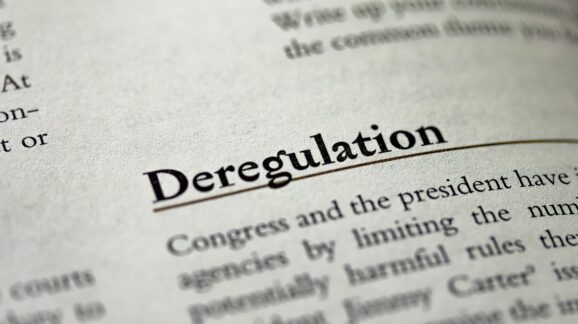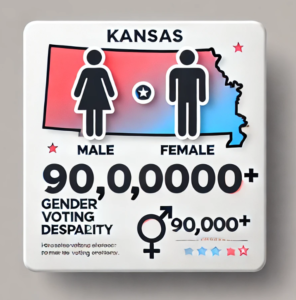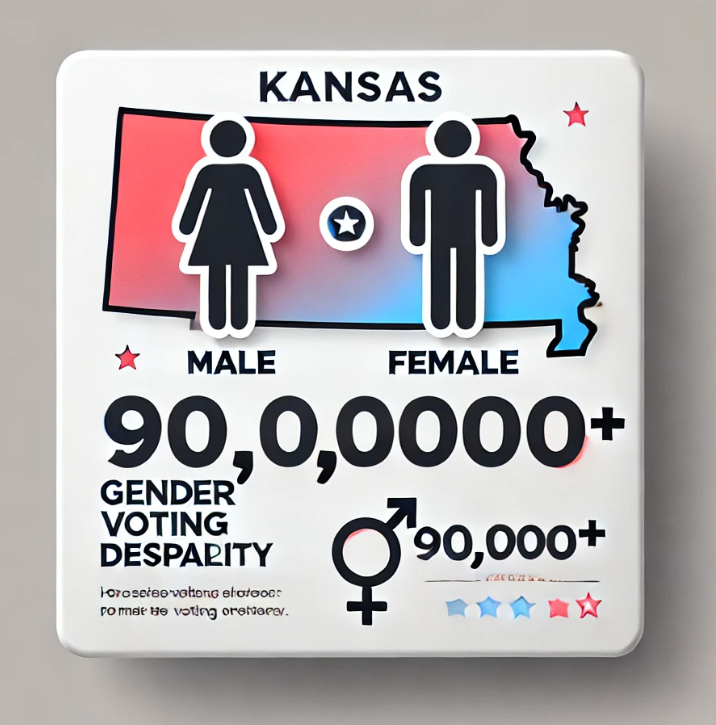“American households pay at least $14,000 in hidden regulatory costs every year,” Wayne Crews, the Fred L. Smith fellow in regulatory studies at the institute, says in a new video provided exclusively to The Daily Signal. “Instead of finding ways to cut those costs for Americans, President Biden’s whole-of-government policymaking framework prioritizes political causes like climate change and equity in the regulatory process.”
“At CEI, we believe it is essential to increase transparency and accountability in the rulemaking process, and make sure rulemaking agencies stick to their original mandates,” adds Crews, who lays out three major recommendations in his new report, “Ten Thousand Commandments: A Snapshot of the Federal Regulatory State,” published Wednesday.
“Rules made by federal agencies impose a cost of government that extends well beyond what Washington taxes,” Crews told The Daily Signal. “Federal environmental, safety and health, social, and economic regulations grip the economy, making it needlessly harder and more expensive to run a household or business in this country.”
His analysis—the latest in a series of annual reports—finds that the average American household pays $14,514 annually in a hidden regulatory cost.
“This amount exceeds every item in the household budget, except housing,” notes the report, which The Daily Signal obtained prior to its publication. “A typical American household spends more on embedded regulation than on health care, food, transportation, entertainment, apparel, services, or savings.” That number represents 17% of an average income before taxes ($87,434 in 2022).
Crews calculated the costs of regulation on the entire economy as $1.939 trillion, and found the average cost per household by dividing that gargantuan number by 133.6 million households. (The graph below, included to help make these numbers concrete, shows the regulatory costs in 2020 plotted alongside the costs households paid for other goods and services in 2020.)
While federal law requires an annual estimate of the cost of regulation, the federal government has not met that requirement since 2002, according to the report. While the Office of Management and Budget has estimated some costs and benefits of major rules, the report finds those analyses incomplete because they do not encompass all rulemaking in each year.
Crews’ report uses a baseline of roughly $1.9 trillion for the costs of federal regulation, encompassing compliance costs, economic losses and losses in gross domestic product, social costs, and other costs. The analyst took recent government reports into account to reach the $1.939 trillion figure, although he acknowledged that it represents an estimate “based on a nonscientific, disclaimer-laden, amalgam of GDP losses and compliance costs derived from available official data and other accessible sources.”
The $1.9 trillion represents more than three-fifths the level of corporate pretax profits in 2022 ($3.138 trillion) and a far larger number than estimated corporate tax revenues ($382 billion).
The report notes that while President Donald Trump’s four years “brought unique reversals, such as a reduced flow of new rules and some rollbacks of existing ones”, President Joe Biden reversed those trends. “Unprecedented open-ended deficits now standing at $1.4 trillion annually are expected to top $2 trillion annually by 2030,” Crews writes. The national debt is nearing $34 trillion (at $33.8 trillion now, according to the U.S. Treasury), which Crews notes is “up from almost $20 trillion when Donald Trump assumed office in 2017.”
The report notes that Biden has launched many “whole-of-government interventions,” most notably on climate change and rooting out “inequity from our economy.”
“These efforts have accelerated a long-standing process that is replacing self-determination and limited government with top-down behavioral, social, and civil rights codes,” Crews writes.
Regulations issued by the executive branch far outstrip the number of laws Congress passes each year. During the 2022 calendar year, agencies issued 3,168 rules, while Congress enacted only 247 laws.
While taxes clearly impact Americans’ pocketbooks and appear itemized on pay stubs, “regulatory costs are baked into prices, without separate charges on receipts,” the report notes. “Many regulations have opportunity costs, which are invisible and impossible to calculate. They can affect households directly or indirectly, such as when businesses will pass some regulatory costs on to consumers, just as they do the corporate tax.”
The report suggests a wide range of reforms to check the growth of regulation. It urges Congress to require congressional approval of significant or controversial agency rules before they become binding. It urges Congress to require annual regulatory transparency report cards and legislation requiring the automatic sunsetting of regulations. It urges Congress to pass a law preventing presidents from using “emergency declarations” to impose permanent government controls. It also urges Congress to identify which federal agencies do more harm than good and to eliminate them or shrink their budgets. It also urges Congress to set up a regulation-reduction commission to identify unneeded regulations to eliminate.
“Congress should start preparing now for substantial reforms to wrangle regulations back under control and put Congress back in charge,” Crews told The Daily Signal.











